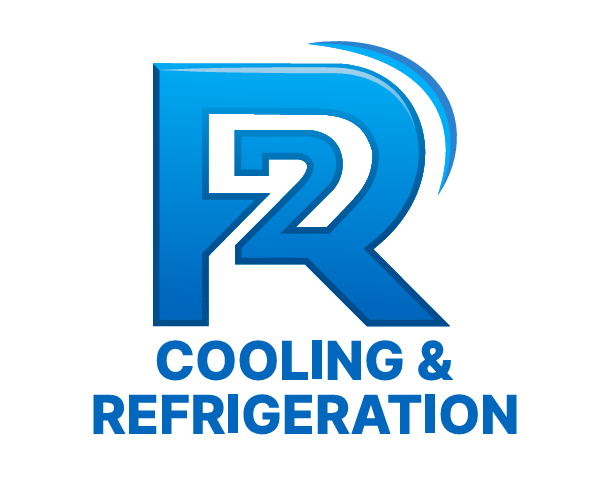Best Practices for Home Comfort Year-Round: HVAC, Humidity & Indoor Air Quality
- 2R Cooling & Refrigeration

- Aug 1
- 3 min read
A comfortable home isn’t just about temperature—it’s about balanced humidity, clean air, and a smoothly running HVAC system. Follow these best practices to optimize your indoor environment in every season, keep energy costs in check, and safeguard your family’s health.

1. Optimize Your HVAC System
a. Regular Maintenance
Filter Changes: Replace or clean filters every 1–3 months to ensure proper airflow and reduce dust buildup.
Professional Tune-Ups: Schedule biannual inspections—before summer cooling and winter heating—to check refrigerant levels, clean coils, and verify system performance.
Thermostat Calibration: Test and recalibrate your thermostat annually (or upgrade to a programmable/smart model) to maintain accurate temperature control.
b. Zoning & Scheduling
Zoned Controls: If possible, install dampers or multiple thermostats to heat/cool only occupied areas.
Temperature Scheduling: Program setbacks when you’re away or asleep (e.g., 4°F higher in summer, 4°F lower in winter) to save 10–15% on energy bills.
c. Airflow Management
Unblock Vents & Registers: Keep furniture and drapes clear of vents to prevent restricted airflow.
Ceiling Fans: Run fans counter-clockwise in summer for a cooling breeze, and clockwise in winter to push warm air down.
2. Maintain Balanced Humidity
a. Ideal Humidity Range
Target 30–50% RH: Relative humidity (RH) between 30% and 50% maximizes comfort, prevents dry skin/itchy eyes, and inhibits mold growth.
b. Humidification in Winter
Use a Humidifier: When indoor air dips below 30% RH, a whole-home or portable humidifier adds moisture to alleviate dry air issues.
Monitor Levels: Place hygrometers in living areas and bedrooms to track humidity and adjust settings.
c. Dehumidification in Summer
Built-In Dehumidification: Many modern HVAC units include dehumidify modes—use them during muggy months.
Standalone Dehumidifiers: In very humid climates or damp basements, deploy a portable dehumidifier to reduce mold risk and improve comfort.
3. Improve Indoor Air Quality (IAQ)
a. Filtration Upgrades
High-Efficiency Filters: Upgrade to MERV 8–13 filters (or HEPA where compatible) to trap dust, pollen, pet dander, and mold spores.
Filter Change Schedule: Swap higher-efficiency filters monthly to avoid airflow restriction.
b. Air Purification Technologies
UV-C Light Systems: Installed in ductwork, UV-C lamps neutralize bacteria, viruses, and mold on coils and passing air.
Electronic Air Cleaners: Ionizing purifiers can capture ultrafine particles, though they require periodic cleaning of collection plates.
c. Source Control & Ventilation
Address Pollutants at Origin: Use kitchen and bathroom exhaust fans when cooking or showering to expel moisture and odors.
Mechanical Ventilation: Consider an Energy Recovery Ventilator (ERV) or Heat Recovery Ventilator (HRV) to introduce fresh outdoor air while conserving energy.
4. Seasonal Checklist
Season | HVAC Tasks | Humidity Control | IAQ Focus |
Spring | Clean condenser coils, inspect refrigerant lines | Run dehumidifier as needed | Deep-clean return vents, change filters |
Summer | Test cooling capacity, check duct insulation | Use AC dehumidify mode | Install UV-C lamp, monitor VOC sources |
Fall | Reverse fan direction, inspect furnace ignition | Prepare humidifier | Clean ducts if dusty, check duct seals |
Winter | Test heat mode, replace furnace filter | Run humidifier to 40% RH | Run exhaust fans sparingly, monitor radon |
5. Smart Technology & Monitoring
Wi-Fi Thermostats: Track energy use, receive filter-change reminders, and adjust settings remotely.
Multi-Sensor Systems: Smart IAQ monitors can report VOCs, CO₂ levels, and particulate matter in real time.
Automated Alerts: Link sensors to your home automation system for instant notifications when temperature, humidity, or air-quality thresholds are breached.

Conclusion & Next Steps
Creating a truly comfortable home means more than just setting the thermostat—it’s about smart HVAC upkeep, balanced humidity, and clean indoor air. By following these best practices, you’ll enjoy even temperatures, healthier air, and lower energy bills no matter the season. Ready to put these tips into action? Reach out to 2R HVAC/R for a personalized assessment, and let our experts ensure your system is optimized, your air quality is superior, and your family stays comfortable all year long.




Comments